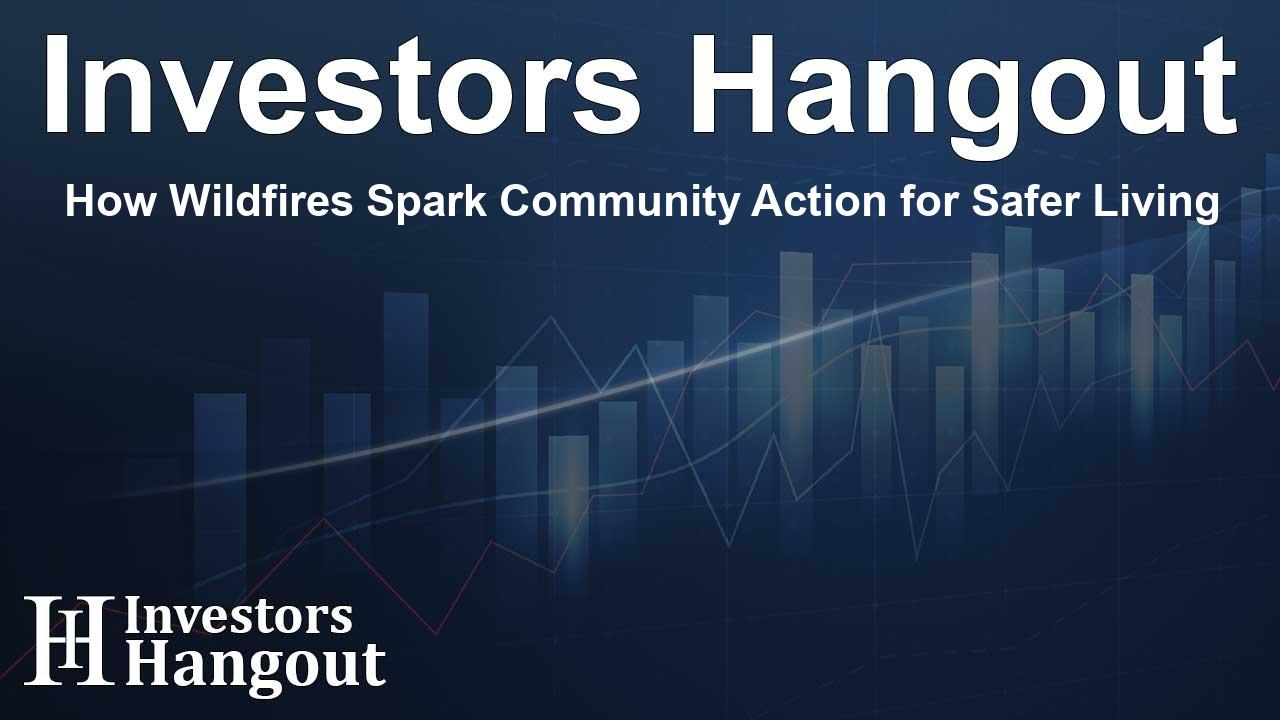How Wildfires Spark Community Action for Safer Living

Heightened Awareness of Wildfire Risks
The recent devastation from wildfires in Los Angeles has echoed across the nation, prompting officials and residents everywhere to reevaluate their approach to fire safety. These fires, fueled by dry vegetation, have rapidly escalated, causing widespread destruction and resulting in numerous fatalities. The alarming scale of these events has stirred conversations about the need for focused community mitigation efforts.
Community-Centric Mitigation Strategies
Traditionally, wildfire prevention efforts have concentrated on forests and public lands, but experts like Andy McEvoy from Oregon State University believe that a shift towards community engagement is essential. He emphasizes that fire safety is not merely a land management issue, but a community concern where every member plays a vital role. This perspective is particularly visible in Los Angeles, where the impact of these disasters highlights the necessity for collaborative safety measures.
Learning Lessons from Past Fires
In Oregon, a series of wind-driven wildfires in 2020 catalyzed similar initiatives aimed at community-wide fire risk reduction. McEvoy contributed to the recent statewide wildfire risk mapping that informs new codes for better home and property safety. However, these efforts face challenges, as residents often resist changes due to cost concerns or attachment to their surroundings. This delicate balance reveals the complexity of fostering a cooperative spirit among homeowners towards fire mitigation.
The Role of Building Codes
Despite California’s stringent building codes aimed at fire resistance, the reality is that many structures affected by wildfires are older homes lacking essential retrofitting. Wildfires in the region have claimed over 40,000 acres, resulting in significant loss of life and property. The takeaway here is that proactive policies in fire-prone areas could protect not only individual homeowners but also their neighbors, fostering a sense of communal responsibility.
Challenges in Engaging Communities
Efforts to connect with residents and private landowners are vital, according to Matthew Wibbenmeyer, who studies wildfire patterns. Many homeowners face obstacles, whether concerns about the financial implications of mitigation measures or a simple reluctance to change their property. However, recent wildfires serve as a wake-up call, sparking a shift in attitudes toward community-wide cooperation in fire safety.
Shifting Focus to Urban Areas
Historically, wildfires were considered primarily a threat to forests, but this has evolved since significant fires impacted urban settings in the mid-1980s. Michele Steinberg of the National Fire Protection Association highlights the realization that effective fire safety requires collective action from both individuals and communities. Without a unified approach, efforts to secure properties against wildfire risks become futile.
The Firewise Initiative
One notable movement is the Firewise program, which encourages municipalities to establish local bodies focused on fire risk reduction. These communities undertake hazard assessments and educational initiatives. To be considered a Firewise site, communities must devise a three-year plan to improve fire safety collectively, emphasizing the importance of neighborly cooperation.
Insurance and Community Responsibility
As awareness grows about fire safety initiatives, insurance companies are beginning to take notice, providing discounts to homeowners within Firewise communities. Experts point out the need for residents to take initiative regarding mitigation work. When individuals see government officials or firefighters engaged in prevention work, they often assume that the responsibility lies solely with the authorities.
Social Engagement and Fire Solutions
As climate change exacerbates extreme weather conditions, communities are recognizing the need to broaden their collaborative efforts in wildfire risk management. Chris Chambers from Oregon’s fire and rescue department notes the importance of a comprehensive plan that includes contributions from every community member. Collaboration not only reduces risks but also strengthens ties, fostering mutual support and recovery in times of disaster.
Finding Synergy in Fire Mitigation
In Ashland, Oregon, proactive efforts are underway following previous wildfires. With the city updating its wildfire protection plan, community involvement has become pivotal. Local surveys and face-to-face interactions are integral to ensuring that residents understand their role in mitigating fire hazards. Erica Fischer from Oregon State University emphasizes the importance of a coordinated approach, addressing not just individual homes but the broader neighborhood landscape as a unified system.
Active Community Engagement
Overall, as communities become acutely aware of the risks posed by wildfires, residents are more engaged and willing to participate in mitigation efforts. Chambers underscores the significance of harnessing this collective energy and fostering an environment where community and individual actions synergize to create safer living conditions.
Frequently Asked Questions
What are community mitigation efforts regarding wildfires?
Community mitigation efforts involve collaborative strategies among residents, local governments, and experts to reduce the risk of wildfires through education, planning, and shared responsibilities.
Why is community involvement crucial for fire safety?
Community involvement is essential because wildfire risks affect entire neighborhoods, and collective action can create systemic changes that enhance overall safety and resilience.
How do building codes influence fire safety in homes?
Building codes establish standards for fire-resistant materials and designs, helping to protect homes from wildfires and potentially preventing widespread destruction.
What is the Firewise program?
The Firewise program is an initiative that encourages communities to develop plans for fire risk reduction and education, promoting collaborative efforts to enhance safety.
How can residents influence wildfire mitigation policies?
Residents can influence policies by participating in community meetings, providing feedback on proposed measures, and actively engaging in fire safety initiatives to advocate for their needs and concerns.
About The Author
Contact Addison Perry privately here. Or send an email with ATTN: Addison Perry as the subject to contact@investorshangout.com.
About Investors Hangout
Investors Hangout is a leading online stock forum for financial discussion and learning, offering a wide range of free tools and resources. It draws in traders of all levels, who exchange market knowledge, investigate trading tactics, and keep an eye on industry developments in real time. Featuring financial articles, stock message boards, quotes, charts, company profiles, and live news updates. Through cooperative learning and a wealth of informational resources, it helps users from novices creating their first portfolios to experts honing their techniques. Join Investors Hangout today: https://investorshangout.com/
The content of this article is based on factual, publicly available information and does not represent legal, financial, or investment advice. Investors Hangout does not offer financial advice, and the author is not a licensed financial advisor. Consult a qualified advisor before making any financial or investment decisions based on this article. This article should not be considered advice to purchase, sell, or hold any securities or other investments. If any of the material provided here is inaccurate, please contact us for corrections.
